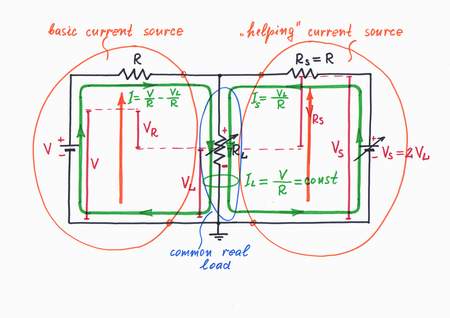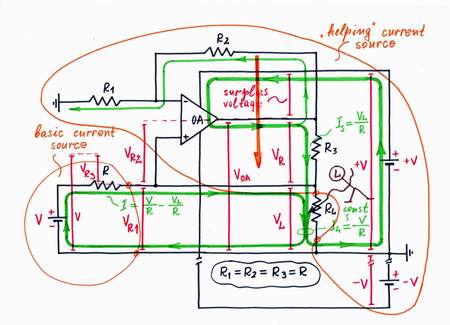<< prev story circuit-fantasia > circuit stories > understanding circuits > Howland current source next story >>
What is the idea behind this circuit?
Howland Current Source for Grounded Load
Idea: Keeping a constant current by adding a current.
As we already know, the simple current source V-R is imperfect as the load affects the current. The voltage drop VL across the load (suppose again that it is a varying resistor RL) is harmful as it enervates the excitation voltage V. As a result, the current I decreases with the value VL/R.
So far, we aided the exciting voltage source by using an additional supplementary voltage source. Now, we will try to aid the voltage source injecting an additional current Is = VL/R by another "helping" current source. We may build it by connecting a "helping" voltage source Bs through another resistor Rs = R to the load.
Implementation: Using an additional op-amp helping current source.
Тhis genius idea is implemented in the famous Howland current source. In this clever circuit, the excitation voltage V and the resistor R form a basic current source. It produces a current I = V/R - VL/R, which passes from the left hand side through the load RL.
The non-inverting amplifier R1-R2-OA and the resistor R3 form a helping current source. It produces a current Is = VL/R, which passes from the right hand side through the load RL. As a result, a steady total current IL = V/R - VL/R + VL/R = V/R flows through the varying load RL. It is a genius idea, isn't it?
<< prev story circuit-fantasia > circuit stories > understanding circuits > Howland current source next story >>


